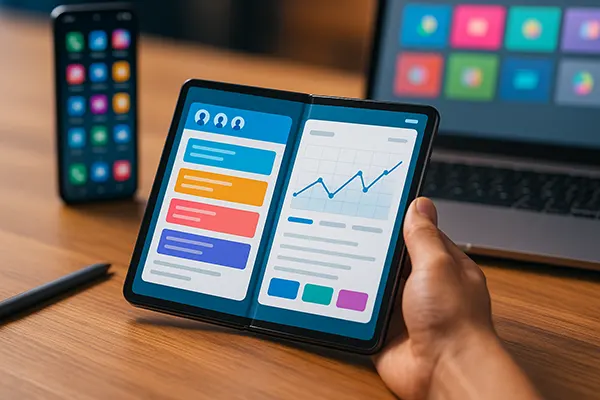Impact of Android Virtualisation on Smartphone Security and Performance in 2025

Android virtualisation has become a critical component of smartphone development in 2025. As devices continue to evolve into complex computing tools, the role of virtual environments in managing resources and enhancing security has grown significantly. This article explores how virtualisation influences smartphone safety and performance today, based on current technological advancements and real-world implementations.
How Android Virtualisation Enhances Security
In 2025, security remains a top priority for both manufacturers and users. Virtualisation technology has emerged as a key defence mechanism, offering strong compartmentalisation of sensitive processes and user data. Unlike traditional OS models, virtualisation allows for isolation of applications, which reduces the risk of malware breaching the system as a whole.
One major development is the integration of Android Virtualisation Framework (AVF) into most high-end smartphones. This technology enables the secure execution of virtual machines (VMs) that operate independently from the host OS. For example, financial apps can now run in isolated environments, making it virtually impossible for malware on the main OS to access transaction data or credentials.
Additionally, the use of virtualisation has improved the effectiveness of hardware-backed security modules. With modern chipsets supporting VM-level execution, Android devices can implement robust zero-trust architectures. These ensure that even if one segment of the system is compromised, the rest of the environment remains protected.
Challenges in Maintaining Virtualisation Security
Despite its benefits, virtualisation introduces new security challenges. Attackers may attempt to exploit hypervisors, the software layer that controls VMs. Manufacturers are investing heavily in making these hypervisors minimal and formally verified to reduce vulnerabilities.
Another issue is the complexity of managing updates across virtual environments. Each VM needs to be maintained separately, and delays in patching could create potential entry points for attackers. Security teams must adopt automated monitoring and update strategies to mitigate this risk.
Finally, not all Android devices support the latest virtualisation standards. Lower-end models may lack the necessary hardware support, creating a fragmented landscape where some users remain exposed despite overall system improvements.
Performance Improvements Through Virtualisation
Android virtualisation in 2025 is not only about security. Performance optimisation is another major benefit. By segmenting processes into separate virtual machines, smartphones can allocate resources more efficiently. Heavy applications like mobile games or creative tools no longer slow down the entire system when running.
With the use of dedicated VM scheduling, devices dynamically assign CPU and memory based on real-time application needs. This granular control ensures smoother multitasking and reduced background activity interference, enhancing the user experience even on devices with mid-range specs.
Another practical advantage is energy management. Virtualisation allows smartphones to isolate and throttle non-essential processes when power is low. As a result, users experience longer battery life without significant performance degradation. This is especially beneficial in enterprise contexts, where secure work environments can run in low-power VMs during travel or fieldwork.
Optimisation Trade-offs
Despite these gains, virtualisation does introduce some overhead. Running multiple virtual machines on a smartphone requires additional system resources, which can slightly impact real-time responsiveness, especially on less powerful hardware.
Moreover, initial VM loading times remain an issue. Although once running, these environments are efficient, the boot-up delay for some VMs can be noticeable. Manufacturers are addressing this with hybrid loading techniques and pre-emptive caching mechanisms.
Lastly, application compatibility still varies. Some legacy Android apps may not function correctly inside virtualised environments, requiring developers to update or rewrite parts of their codebase. This transition is ongoing and expected to improve with Android’s next system update.

Use Cases and Industry Adoption
Leading smartphone brands in 2025, including Samsung, Google, and Xiaomi, have integrated virtualisation into their flagship devices. Google’s Pixel line, for instance, uses Android Virtualisation Framework to separate user and work profiles on a hardware level, ensuring enterprise-grade security on consumer phones.
In enterprise environments, virtualisation allows IT departments to deploy and manage secure workspaces remotely. BYOD (Bring Your Own Device) policies benefit particularly from this, as companies can install a virtual work OS on an employee’s phone without accessing personal data.
Beyond security and enterprise, virtualisation also supports testing and development. Developers can now create and debug applications in isolated environments directly on phones, reducing the need for separate testing devices or emulators.
Market and Future Outlook
The market for Android virtualisation solutions is growing rapidly. Security-conscious consumers and businesses are actively seeking smartphones with built-in virtualisation features. This demand is driving innovation, leading to more efficient hypervisors and better developer support.
Looking forward, Android is expected to expand its native virtualisation support beyond flagship devices. This will make secure computing more accessible across price tiers. Collaborative efforts between chipset manufacturers and OS developers will play a key role in enabling this transition.
As virtualisation continues to mature, we may see the rise of “virtual smartphone stacks” where entire phone environments can be cloned, paused, and resumed across devices. This could redefine how users interact with mobile ecosystems, adding a new layer of flexibility and personalisation.




